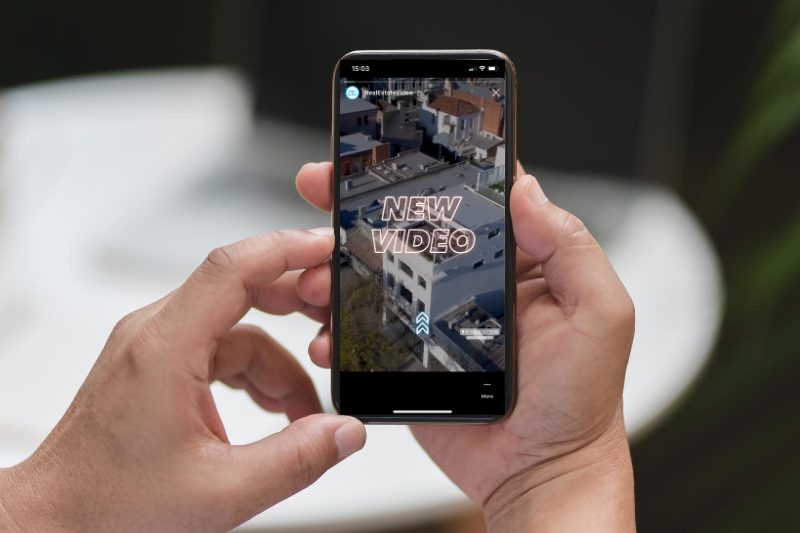Ultimate Guideline to Facebook Video and Best Practices

Facebook video marketing can appear daunting at first glance, but it will reward businesses who stick with it and master its power.
Leveraging consumer preferences for video content, Facebook video marketing is a superb way to connect with consumers on an emotional level. Businesses can build relationships with consumers by giving them the type of content they love. But video content is also content that the Facebook algorithm loves and subsequently promotes in search results.
So how can a business get its message in front of an estimated 7 billion video views every quarter?
Read on to find to discover five ways that businesses can effectively reach consumers through Facebook video.
Linked or native?
Traditionally, linking was the way that users shared videos on Facebook. Linking continues to be commonplace because it is quick and easy, but native video is now more popular.
What are the reasons for this shift? For one, native videos auto-play on Facebook – which naturally increases user engagement. They are also favoured by the Facebook algorithm, with a Newswhip report finding that 98% of the top-performing videos in 2018 were native.
As if that wasn’t enough, a separate study found that a native video uploaded to Facebook had 86% higher reach than the same video posted to YouTube.
For marketing departments trying to foster brand interaction, native video is the clear winner.
Tips for native Facebook video
- Native Facebook videos show up in user feeds, so it is important to capture their attention quickly. Wherever possible, provide value upfront. Previewing the video or sharing tips, tactics, or advice in bite-size chunks is one way to do this.
- Because of their auto-play nature, native videos have no sound. As a result, businesses should not rely on sound to get their message across. Instead, they should use text to convey key ideas or at the very least, provide subtitles.
- If nothing else, give Facebook what it wants. The algorithm will reward marketing teams who post original, long-form videos consistently.
Native video quality
Consumers expect 720p resolution as an absolute minimum, so ensure that videos are uploaded in high definition.
Follow these steps to make sure:
- Tap the three horizontal lines at the bottom right.
- Scroll down to Settings and Privacy, and then tap Settings.
- Scroll down again to the Media and Contacts subheading, and then tap Videos and Photos.
- Under Video Settings, enable the Upload HD capability.
Native video SEO
It might be tempting to relax on SEO when uploading videos, but this would be a mistake.
Facebook says that adding SEO to videos “can help more people see your content, both via Search results and also via the recommended videos that we show in News Feed and in Facebook Watch.”
After uploading a video, spend some time optimising the following:
- Title – use this field to concisely describe what the video is about. Include major keywords and keep it short – under 30 characters works best.
- Description – the description that appears with the video but also in Facebook search results.
- Tags – include a maximum of eight tags (keywords) with each video. Use tags that consumers might use in searching for similar videos.
- Thumbnail – like the title, the thumbnail should be concise while previewing what the video is about. It should also stand out to a consumer as they browse search results.
How to share a native video on Facebook
Sharing a native Facebook video is simple! Just follow these steps:
- On either desktop or mobile, click the “What’s on your mind?” dialog box which opens a popup.
- Click on Photo/Video, and follow the prompts to upload a video.
- Fill in additional information about your video, and you’re done!
If certain content is well received, there is the option to pin it to the top of the feed. To do this, simply select the icon at the top right-hand corner of a video. Then, select “Pin to top of page” on desktop or “Pin to Top” on mobile.
Facebook video specifications
- Native Facebook videos should mimic default smartphone and webcam specifications. That is, at least 720 pixels wide with a maximum frame rate of 30fps.
- The aspect ratio of landscape videos is 16:9, with a portrait video being 9:16.
- Videos can be as short as 3 seconds or as long as four hours. For the longer videos, keep in mind that the maximum file size is 4GB.
Facebook video metrics
There are several important metrics relevant to marketing campaigns. They include reach (total views), average engagement, clicks, and audience retention.
There are also more classic metrics such as likes, comments, and shares. Here, it’s important to note that Facebook does not provide information on individual users who have interacted with a video.
Facebook Stories videos

Facebook Stories is a response to the tremendous popularity of Snapchat, who pioneered the story format. A single Facebook story can consist of up to 12 pieces of content strung together in a montage. Each piece of content can be 15 seconds long and disappears 24 hours after upload.
Tips for using Facebook Stories
Stories are great for featuring raw, unedited, behind-the-scenes content. As a general rule, Facebook stories should give consumers an authentic look at daily life in a business. Stories should not repurpose old Facebook videos. However, they can be used to announce that a new video has gone live, for example.
Story video metrics
Facebook Stories metrics are rather limited. The following metrics are trackable for 14 days after the story goes live:
- Unique views.
- Exits – the number of users who exited the story.
- Forward taps – users who skipped to the next story.
- Backward taps – users who revisited one of the 12 pieces of the sequence.
- Skip swipes – users who skipped the entire story sequence.
Facebook Live videos
As the name suggests, Facebook Live is a live video streaming feature. Ultimately, businesses that create live videos need to have a good reason for doing so. As they require immediate viewing, there needs to be incentives for consumers to watch. These incentives may include exclusive information in the form of products, tutorials, or interviews.
Tips for Facebook Live videos
Interaction is key in Facebook Live videos. Businesses can use this opportunity to interact with their customer base by offering polls and quizzes. Consumers can ask questions about the business in turn. Whatever the interaction method, keep the live stream humming! Facebook will continue to notify other followers of the event so long as it is running.
Metrics for Facebook Live videos
After the live video has finished streaming, viewable metrics include:
- Total views and total 10-second views.
- Total minutes viewed.
- Unique viewers total.
- Average completion rate – expressed as a percentage.
- Peak live viewer count, or the total number of simultaneous viewers.
Facebook Video Ads
According to Adobe, consumers who view videos are almost twice as likely to buy when compared to non-video viewers. This behaviour allows businesses to capitalise on the enormous popularity of Facebook videos with targeted, effective advertising.
Ads can be formatted in a carousel and scrollable slider that contains other ads. They can also take the form of sponsored posts and stories that appear in feeds with the label “Promoted”.
Facebook video ad specifications
Facebook video ad specifications are identical to standard Facebook videos. In case you’ve forgotten, this means a landscape and portrait orientation of 16:9 and 9:16 respectively. Ads must also be under 4GB in size and run for under four hours – although it is difficult to see any ad running for that long!
Tips for Facebook video ads
- First, ensure that all video ads get their message across without sound.
- Second, tell the message quickly. After analysing millions of videos, digital agency Wistia found that consumers watch 80% of a video that is shorter than 30 seconds. After 30 seconds, videos enjoy declining engagement the longer they get.
- Furthermore, double down on content ads that receive the most engagement. This increases the odds that Facebook grants a higher ad relevancy score – making it cheaper for the business to run.
Facebook video ad metrics
Facebook video ad analytics are relatively detailed and can be tracked based on reach, engagement, and conversions. There are also metrics provided on:
- 2-second continuous views.
- Total ThruPlays, and the cost per ThruPlay.
- Total views (reach), and the total amount spent.
- Video average watch time.
Conclusion
With so many video marketing strategies at their disposal, businesses stand a high chance of finding one that works for them. Some will no doubt use a combination of strategies to reach their audience.
Whatever the case, it is crucial that businesses get in front of Facebook’s 1 billion active users. They can do this by creating videos that provide value and take advantage of Facebook’s algorithm, encouraging people to hit the like or share button in the process.
If you’re ready to start Facebook Video marketing, contact us today.










